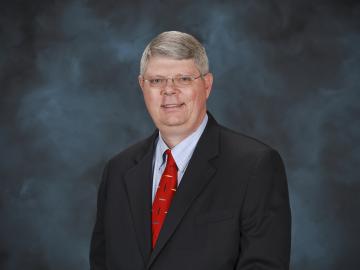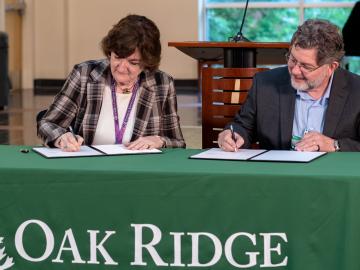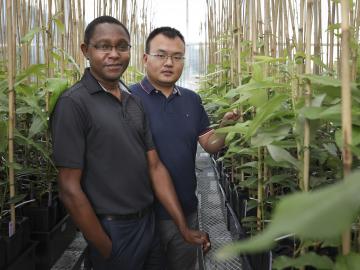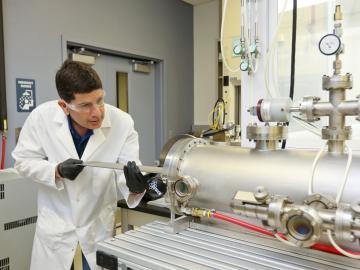
Filter News
Area of Research
- Advanced Manufacturing (8)
- Biological Systems (3)
- Biology and Environment (8)
- Building Technologies (3)
- Clean Energy (108)
- Climate and Environmental Systems (4)
- Computational Biology (1)
- Computational Engineering (1)
- Computer Science (8)
- Energy Frontier Research Centers (1)
- Fossil Energy (1)
- Fuel Cycle Science and Technology (1)
- Fusion Energy (7)
- Materials (107)
- National Security (7)
- Neutron Science (49)
- Nuclear Science and Technology (25)
- Nuclear Systems Modeling, Simulation and Validation (1)
- Quantum information Science (3)
- Sensors and Controls (2)
- Supercomputing (54)
- Transportation Systems (1)
Date
News Topics
- 3-D Printing/Advanced Manufacturing (20)
- Advanced Reactors (8)
- Artificial Intelligence (13)
- Big Data (8)
- Bioenergy (11)
- Biology (1)
- Biomedical (9)
- Biotechnology (1)
- Clean Water (6)
- Climate Change (1)
- Composites (5)
- Computer Science (49)
- Critical Materials (1)
- Cybersecurity (8)
- Energy Storage (10)
- Environment (22)
- Exascale Computing (2)
- Frontier (2)
- Fusion (9)
- Grid (8)
- Isotopes (7)
- Machine Learning (5)
- Materials Science (30)
- Mercury (2)
- Microscopy (10)
- Molten Salt (5)
- Nanotechnology (15)
- Neutron Science (26)
- Nuclear Energy (27)
- Physics (15)
- Polymers (7)
- Quantum Science (13)
- Security (9)
- Space Exploration (6)
- Summit (11)
- Sustainable Energy (8)
- Transportation (19)
Media Contacts

A tiny vial of gray powder produced at the Department of Energy’s Oak Ridge National Laboratory is the backbone of a new experiment to study the intense magnetic fields created in nuclear collisions.


The US Department of Energy’s Oak Ridge National Laboratory is once again officially home to the fastest supercomputer in the world, according to the TOP500 List, a semiannual ranking of the world’s fastest computing systems.

Arthur “Buddy” Bland, program director of the Oak Ridge Leadership Computing Facility (OLCF) at the Department of Energy’s Oak Ridge National Laboratory, has received the Secretary’s Appreciation Award for his nearly four decades of achievements

StealthCo, Inc., an Oak Ridge, Tenn.-based firm doing business as Stealth Mark, has exclusively licensed an invisible micro-taggant from the Department of Energy’s Oak Ridge National Laboratory. The anticounterfeiting technology features a novel materials coding system that uses an infrared marker for identification.


In an effort to reduce errors in the analyses of diagnostic images by health professionals, a team of researchers from the Department of Energy’s Oak Ridge National Laboratory has improved understanding of the cognitive processes

Colleen Iversen, a senior staff scientist in the Environmental Sciences Division at the Department of Energy’s Oak Ridge National Laboratory, has been selected for the New Voices in Sciences, Engineering, and Medicine project launched by the National Academies of Scie...

For decades, biologists have believed a key enzyme in plants had one function—produce amino acids, which are vital to plant survival and also essential to human diets. But for Wellington Muchero, Meng Xie and their colleagues, this enzyme does more than advertised. They had run a series of experiments on poplar plants that consistently revealed mutations in a structure of the life-sustaining enzyme that was not previously known to exist.



